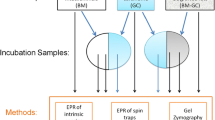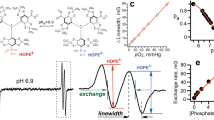Abstract
An increase in naturally-occurring porphyrins has been described in the blood of subjects bearing different kinds of tumours, that has been proposed as an additional parameter for the diagnosis of occult cancer, although at present the reason for the phenomenon is not exactly defined. In this work the increase of porphyrins in plasma of tumour-bearing subjects has been investigated in parallel with their occurrence in other tissues, considering the systemic iron homeostasis subversion taking place in the presence of cancer. The transgenic female MMTV-neu mouse-developing spontaneous mammary adenocarcinoma has been used as an experimental model, in comparison to non-transgenic C1 mouse as a control. The spleen, accomplishing both hemocatheretic and hemopoietic functions in rodents, and the liver have been considered because of their deep engagement in heme metabolism, entailing both the fate of protoporphyrin IX (PpIX) as its ultimate precursor, and iron homeostasis. Investigations have been performed by means of microspectrofluorometric and image analysis of tissue autofluorescence (AF), and histochemical detection of non-heme iron. In tumour-bearing mouse, along with a marked PpIX presence in tumour, a PpIX enhancement in spleen and liver is observed, that is accompanied by a significant increase in plasma. The phenomenon can be related to a systemic alteration of heme metabolism induced by tumour cells to face their survival and proliferation requirements.
Similar content being viewed by others
References
G. A. Wagnières, W. M. Star and B. C. Wilson, In vivo fluorescence spectroscopy and imaging for oncological applications, Photochem. Photobiol., 1998, 68, 603–632.
N. Ramanujam, Fluorescence spectroscopy of neoplastic and nonneoplastic tissues, Neoplasia, 2000, 2, 89–117.
N. Ramanujam, Fluorescence spectroscopy in vivo, in Encyclopedia of Analytical Chemistry, ed. R. A. Meyers, Chichester, John Wiley & Sons Ltd, Madison, 2000, pp. 1–37.
R. Da Costa, H. Andersson and B. C. Wilson, Molecular fluorescence excitation-emission matrices relevant to tissue spectroscopy, Photochem. Photobiol., 2003, 78, 384–392.
G. Bottiroli and A. C. Croce, The autofluorescence spectroscopy of cells and tissue as a tool for biomedical diagnosis, in Comprehensive Series in Photosciences Lasers and Current Optical Techniques in Biology, ed. G. Palumbo and R. Pratesi, RSC Books and Databases, Cambridge, 2004, pp. 189–210.
A. Policard, Etudes sur les aspects offerts par les tumeurs experimentales examinees a la lumière de Woods, C.R. Soc. Biol., 1924, 91, 1423–1425.
F. N. Ghadially and W. J. P. Neish, Porphyrin fluorescence of experimentally produces squamous cell carcinoma, Nature, 1960, 188, 1124.
G. Bottiroli, A. C. Croce, D. Locatelli, R. Marchesini, E. Pignoli, S. Tomatis, C. Cuzzoni, S. Di Palma, M. Dal Fante and P. Spinelli, Natural fluorescence of normal and neoplastic colon: a comprehensive ex vivo study, Lasers Surg. Med., 1995, 16, 48–60.
K. T. Moesta, B. Ebert, T. Handke, D. Nolte, C. Nowak, W. E. Haensch, R. K. Pandey, T. J. Dougherty, H. Rinneberg and P. M. Schlag, Protoporphyrin IX occurs naturally in colorectal cancers and their metastases, Cancer Res., 2001, 61, 991–999.
B. Mayinger, M. Jordan, P. Horner, C. Gerlach, S. Muehldorfer, B. R. Bittorf, K. E. Matzel, W. Hohenberger, E. Haln and K. Guenter, Endoscopic light-induced autofluorescence spectroscopy for the diagnosis of colorectal cancer and adenoma, J. Photochem. Photobiol., B, 2003, 70, 13–20.
R. M. Cothren, M. V. Jr Sivak, J. Van Dam, R. E. Petras, M. Fitzmaurice, J. M. Crawford, J. Wu, J. F. Brennan, R. P. Rava, R. Manoharan and M. S Feld, Detection of dysplasia at colonoscopy using laser-induced fluorescence: a blinded study, Gastrointest. Endosc., 1996, 44, 168–176.
K. Nakanishi, Y. Ohsakia, M. Kuriharab, S. Nakaoa, Y. Fujita, K. Takeyamac, S. Osanaia, N. Miyokawad and S. Nakajima, Color autofluorescence from cancer lesions: Improved detection of central type lung cancer, Lung Cancer, 2007, 58, 214–219.
D. M. Harris and J. Werkhaven, Endogenous porphyrin fluorescence in tumours., Lasers Surg. Med., 1987, 7, 467–472.
K. Koeing and H. Schneckenburger, Laser-induced autofluorescence for medical diagnosis, J. Fluoresc., 1994, 4, 17–37.
L. Leibovici, N. Schoenfeld, H. A. Yehoshua, R. Mamet, E. Rakowsky, A. Shindel and A. Atsmon, Activity of porphobilinogen deaminase in peripheral blood mononuclear cells of patients with metastatic cancer, Cancer, 1988, 62, 2297–2300.
N. Schoenfeld, O. Epstein, M. Lahav, R. Mamet, M. Shaklai and A. Atsmon, The heme biosynthetic pathway in lymphocytes of patients with malignant lymphoproliferative disorders, Cancer Lett., 1988, 43, 43–48.
Q. Peng, T. Warloe, K. Berg, J. Moan, M. Kongshaug, K. E. Giercksky and J. M. Nesland, 5-Aminolevulinic acid-based photodynamic therapy. Clinical research and future challenges, Cancer, 1997, 79, 2282–2308.
X. Xu, J. Meng and S. Hou, The characteristic fluorescence of the serum of cancer patients, J. Lumin., 1988, 40–41, 219–220.
S. Madhuri, N. Vengadesan, P. Aruna, D. Koteeswaran, P. Venkatesan and S. Ganesan, Native fluorescence spectroscopy of blood plasma in the characterization of oral malignance, Photochem. Photobiol., 2003, 78, 197–204.
V. Masilamani, K. Al-Zhrani, M. Al-Salhi, A. Al-Diab and M. Al-Ageily, Cancer diagnosis by autofluorescence of blood components, J. Lumin., 2004, 109, 143–154.
L. C. Courrol, F. R. De, Oliveira Silva, E. L. Coutinho, M. F. Piccoli, R. D. Mansano, N. D. Vieira Júnior, N. Schor and M. H. Bellini, Study of blood porphyrin spectral profile for diagnosis of tumour progression, J. Fluoresc., 2007, 17, 289–292.
B. D. Dickerson, B. L. Geist, W. B. Spillman and J. L. Robertson, Canine cancer screening via ultraviolet absorbance, fluorescence spectroscopy of serum proteins, Appl. Opt., 2007, 46, 8080–8088.
M. Lualdi, L. Battaglia, A. Colombo, E. Leo, D. Morelli, E. Poiasina, A. Vannelli and R. Marchesini, Colorectal cancer detection by means of optical fluoroscopy. A study on 494 subjects, Front. Biosci., 2010, E2, 694–700.
O. S. Wolfbeis and M. Leiner, Mapping of the total fluorescence of human blood serum as a new method for its characterization, Anal. Chim. Acta, 1985, 167, 203–215.
M. R. Hubbmann, M. J. P. Leiner and R. J. Schaur, Ultraviolet fluorescence of human sera: I. Sources, of characteristic differences in the ultroviolet fluorescence spectra of sera from normal and cancerbearing humans, Clin. Chem., 1990, 36, 1880–1883.
R. Kalaivani, V. Masilamani, K. Sivaji, M. Elangovan, V. Selvaraj, S. G. Balamurugan and M. S. Al-Salhi, Fluorescence spectra of blood components for breast cancer diagnosis, Photomed. Laser Surg., 2008, 26, 251–256.
F. R. de Oliveira Silva, M. H. Bellini, V. R. Tristào, N. Schor, N. D. Vieira Jr and L. C. Courrol, Intrinsic fluorescence of protophorphyrin IX from blood samples can yield information on the growth of prostate tumours, J. Fluoresc., 2010, 20, 1159–1165.
T. Ganz and E. Nemeth, Hepcidin and Disorders of Iron Metabolism, Annu. Rev. Med., 2011, 62, 347–360.
J. L. Buss, F. M. Torti and S. V. Torti, The role of iron chelation in cancer therapy, Curr. Med. Chem., 2003, 10, 1051–1064.
D. R. Richardson, Iron and neoplasia: serum transferrin receptor and ferritin in prostate cancer, J. Lab. Clin. Med., 2004, 144, 173–175.
I. Freitas, E. Boncompagni, R. Vaccarone, C. Fenoglio, S. Barni and G. F. Baronzio, Iron accumulation in mammary tumour suggests a tug of war between tumour and host for the microelement, Anticancer Res., 2007, 27, 3059–3065.
N. Yanai, Y. Matsuya and M. Obinata, Spleen stromal cell lines selectively support erythroid colony formation, Blood, 1989, 74, 2391–2397.
F. J. M. F. Dor, M. L. Ramirez, K. Parmar, E. L. Altman, C. A. Huang, J. D. Down and D. K. C. Cooper, Primitive hematopoietic cell populations reside in the spleen: Studies in the pig, baboon and human, Exp. Hematol., 2006, 34, 1573–1582.
F. Lucchini, M. G. Sacco, N. Hu, A. Villa, J. Brown, L. Cesano, L. Mangiarini, G. Rindi, S. Kindl, F. Sessa, P. Vezzoni and L. Clerici, Early and multifocal tumors in breast, salivary, harderian and epididymal tissues developed in MMTY-Neu transgenic mice, Cancer Lett., 1992, 64, 203–209.
R. Rotomskis, G. Streckyte and S. Bagdonas, Phototransformations of sensitizers. 2. Photoproducts formed in aqueous solution of porphyrins, J. Photochem. Photobiol., B, 1997, 39, 172–175.
J. S. Dysart and M. S. Patterson, Photobleaching kinetics, photoproduct formation, and dose estimation during ALA induced PpIX PDT of MLL cells under well oxygenated and hypoxic conditions, Photochem. Photobiol. Sci., 2006, 5, 73–81.
W. Marquardt, An algorithm for least-squares estimation of non-linear parameters, J. Soc. Indust. Appl. Math., 1963, 11, 431–441.
A. C. Croce, A. Ferrigno, M. Vairetti, R. Bertone, I. Freitas and G. Bottiroli, Autofluorescence properties of isolated rat hepatocytes under different metabolic conditions, Photochem. Photobiol. Sci., 2004, 3, 920–926.
G. Weagle, P. E. Paterson, J. Kennedy and R. Pottier, The nature of the chromophore responsible for naturally occurring fluorescence in mouse skin, J. Photochem. Photobiol., B, 1988, 2, 313–320.
S. Bagdonas, L. W. Ma, V. Iani, R. Rotomskis, P. Juzenas and J. Moan, Phototransformations of 5-animolevulinic Acid-Induced protoporphyrin IX in vitro: A spectroscopic study, Photochem. Photobiol., 2000, 72, 186–192.
E. Nagababu and J. M. Rifkind, Heme degradation by reactive oxygen species, Antioxid. Redox Signal, 2004, 6, 967–978.
G. Bottiroli, R. Ramponi and A. C. Croce, Quantitative analysis of intracellular behaviour of porphyrins, Photochem. Photobiol., 1987, 46, 663–667.
J. Kaczynski, G. Hansson and S. Wallerstedt, Increased porphyrins in primary liver cancer mainly reflect a parallel liver disease, Gastroenterol. Res. Pract., 2009, 2009, 6, DOI: 10.1155/2009/402394.
M. Al-Salhi, V. Masilamani, T. Vijmasi, H. Al-Nachawati and A. P. Vijayaraghavan, Lung Cancer Detection by Native Fluorescence Spectra of Body Fluids-A Preliminary Study, J. Fluoresc., 2010, DOI: 10.1007/s10895-010-0751-9.
S. Taketani, M. Ishigaki, A. Mizutani, M. Uebayashi, M. Numata, Y. Ohgari and S. Kitajima, Heme Synthase (Ferrochelatase) Catalyzes the Removal of Iron from Heme and Demetalation of Metalloporphyrins, Biochemistry, 2007, 46, 15054–15061.
M. Sakaino, M. Ishigaki, Y. Ohgari, S. Kitajima, R. Masaki, A. Yamamoto and S. Taketani, Dual mitochondrial localization and different roles of the reversible reaction of mammalian ferrochelatase, FEBS J., 2009, 276, 5559–5570.
F. Gomes de Go´es Rocha, K. C. Barbosa Chavez, C. Zanini Gomes, C. Barricheli Campanharo, L. Coronato Courrol, N. Schor and M. H. Bellini, Erythrocyte Protoporphyrin Fluorescence as a Biomarker for Monitoring Antiangiogenic Cancer Therapy, J. Fluoresc., 2010, 20, 1225–1231.
Author information
Authors and Affiliations
Corresponding author
Rights and permissions
About this article
Cite this article
Croce, A.C., Santamaria, G., De Simone, U. et al. Naturally-occurring porphyrins in a spontaneous-tumour bearing mouse model. Photochem Photobiol Sci 10, 1189–1195 (2011). https://doi.org/10.1039/c0pp00375a
Received:
Accepted:
Published:
Issue Date:
DOI: https://doi.org/10.1039/c0pp00375a




